| Home |
| Acknowledgments |
| Conventions |
| Glossary |
| Maps |
| References |
| Links |
| Articles |
| Thumbnails |
| Species
list |
| Family |
| Next
species |
Additional Photos
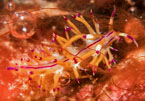
top

young
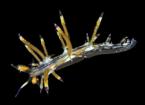
papillae
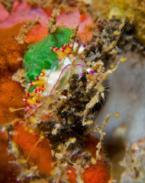
feeding
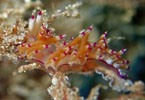
laying eggs

Flabellina sp. #2
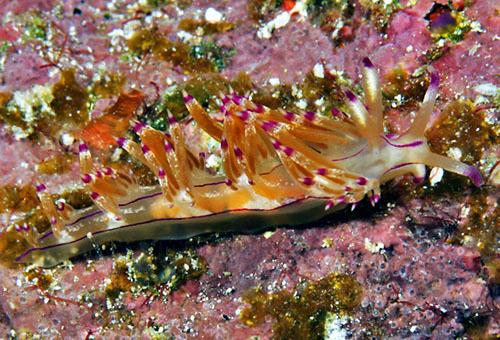
| Maximum Size: about 25 mm (Keoki Stender). Identification: The body of this aeolid is translucent white with patches of opaque white and a thin purple medial line running the length of the notum. Two other lines run down the sides of the body. The cerata are translucent with opaque white subapically and purple, shading to white, at there tips. The digestive gland is visible through the cerata and is usually tan although the tissue of the cerata may be yellow in some animals. (Note 1) The pale orange rhinophores have fine papillae on their posterior margins. Natural History: Flabellina sp. #2 is a rare species on Maui where it is known from only four animals found in moderately protected to moderately exposed locations. Their habitats ranged from rocky areas at 15 m (50 ft) to Halimeda kanaloana beds at 32 m (105 ft). It appears to be more common on Oahu and has been found at 12 m (39 ft) on Kauai. It probably feeds on a yellow hydroid. (Note 2) It lays a white (or, very pale pink?) egg mass, usually on its food hydroid. Distribution: Big Island, Maui, Molokai, Oahu and Kauai: widely distributed in the Indo-Pacific; introduced to the Mediterranean. Taxonomic notes: It was first recorded in Hawaii from off Makena, Maui by PF on June 7, 1994. Gosliner, et. al. (2018) restricts Flabellina rubrolineata to the Indian Ocean. So, we're using F. sp. #2 pending further DNA work. Photo: Lars Snitker: found by Tiffany Winn; Reef's End, Molokini Islet, Maui; Dec. 28, 2011. Observations and comments: Note 1: The yellow pigment in the cerata of some Oahu animals seems to be in the tissue rather than the digestive gland. However, it closely matches the hue of at least one of the hydroids it eats. (see photo) Perhaps, it's extracting the pigment from its food? Note 2: April McCormack reported finding three animals on a white hydroid on Kauai. So, it may feed on more than one species. Or, the hydroid it eats may vary in color. |
| Thumbnails |
Species
list |
Family | Next species | Top |